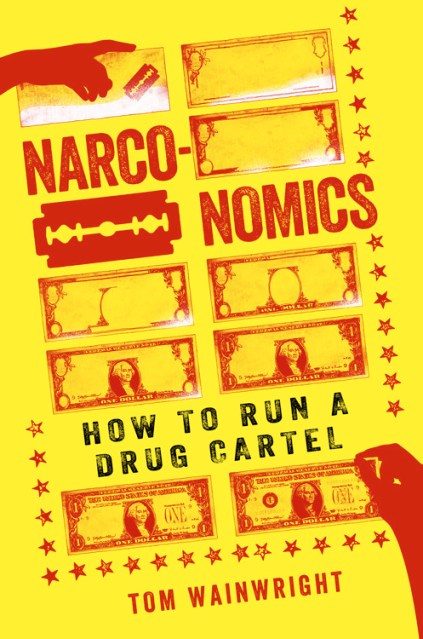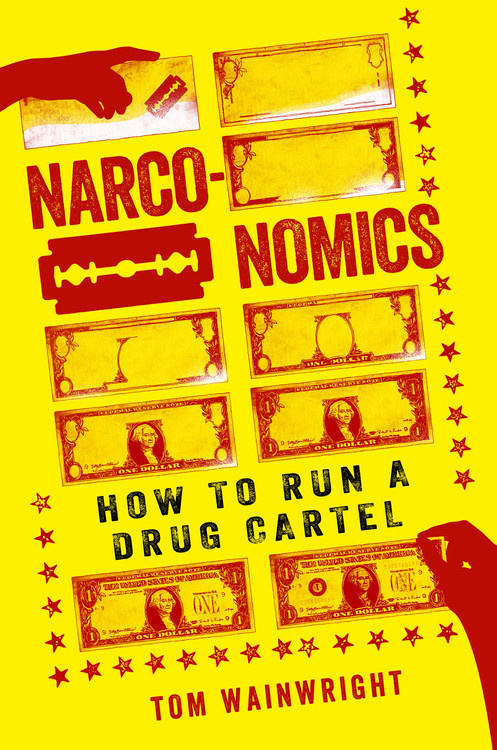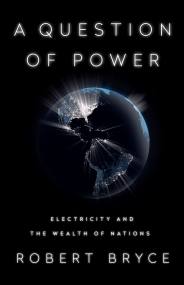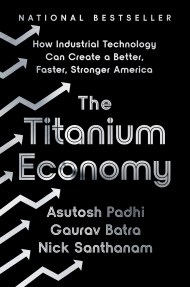Promotion
Use code MOM24 for 20% off site wide + free shipping over $45
Narconomics
How to Run a Drug Cartel
Contributors
Formats and Prices
Price
$19.99Price
$25.99 CADFormat
Format:
- Trade Paperback $19.99 $25.99 CAD
- ebook $11.99 $15.99 CAD
This item is a preorder. Your payment method will be charged immediately, and the product is expected to ship on or around April 11, 2017. This date is subject to change due to shipping delays beyond our control.
Also available from:
Picking his way through Andean cocaine fields, Central American prisons, Colorado pot shops, and the online drug dens of the Dark Web, Tom Wainwright provides a fresh, innovative look into the drug trade and its 250 million customers. More than just an investigation of how drug cartels do business, Narconomics is also a blueprint for how to defeat them.
How does a budding cartel boss succeed (and survive) in the 300 billion illegal drug business? By learning from the best, of course. From creating brand value to fine-tuning customer service, the folks running cartels have been attentive students of the strategy and tactics used by corporations such as Walmart, McDonald’s, and Coca-Cola.
And what can government learn to combat this scourge? By analyzing the cartels as companies, law enforcers might better understand how they work — and stop throwing away 100 billion a year in a futile effort to win the “war” against this global, highly organized business.
Your intrepid guide to the most exotic and brutal industry on earth is Tom Wainwright. Picking his way through Andean cocaine fields, Central American prisons, Colorado pot shops, and the online drug dens of the Dark Web, Wainwright provides a fresh, innovative look into the drug trade and its 250 million customers.
The cast of characters includes “Bin Laden,” the Bolivian coca guide; Old Lin,” the Salvadoran gang leader; “Starboy,” the millionaire New Zealand pill maker; and a cozy Mexican grandmother who cooks blueberry pancakes while plotting murder. Along with presidents, cops, and teenage hitmen, they explain such matters as the business purpose for head-to-toe tattoos, how gangs decide whether to compete or collude, and why cartels care a surprising amount about corporate social responsibility.
More than just an investigation of how drug cartels do business, Narconomics is also a blueprint for how to defeat them.
Genre:
-
“[Tom Wainwright] brings a fine and balanced analytical mind to some very good research…By looking at the drug trade as a business, Wainwright is able to reveal much about why it wreaks such havoc in Central and South America. Wainwright show[s] how drug violence is not so much senseless but the devastating result of economic calculations taken to their brutal extreme. [His] conclusion is titled 'Why Economists Make the Best Police Officers.' It is one of the pithiest and most persuasive arguments for drug law reform I have ever read.”—Misha Glenny, New York Times Sunday Book Review
-
"Tom Wainwright has powerfully argued in favor of legalizing drugs. He says that the policies aimed at stifling the drug trade seem to be misdirected and have failed... a controversial but well-argued book... a must-read for everyone interested in solving the drug issue. Wainwright makes a lot of sense at a time when the world seems helpless against drug traffickers."—The Washington Book Review -
“[Wainwright's] book is courageous on several levels… [he] challenges everyone at once—the dealers, the drug czars, and the bystanders in between. A daring work of investigative journalism and a well-reasoned argument for smarter drug policies.”—Kirkus Reviews -
“Readers interested in the intersection of crime, economics, entrepreneurship, and law enforcement will find this work fascinating.”—Library Journal
-
“Tom Wainwright of the Economist brings a fine and balanced analytical mind to some very good research…”—Minneapolis Star Tribune -
“A lively and engaging book, informed by both dogged reporting and gleanings from academic research...”—Wall Street Journal
- On Sale
- Apr 11, 2017
- Page Count
- 288 pages
- Publisher
- PublicAffairs
- ISBN-13
- 9781610397704
Newsletter Signup
By clicking ‘Sign Up,’ I acknowledge that I have read and agree to Hachette Book Group’s Privacy Policy and Terms of Use







